Canihua:
What is it?, history, cultivation, nutritional value, uses, recipes, and more...
Cañihua is an Andean cereal with high nutritional value, boasting a rich protein and fiber content. It possesses antioxidant properties due to its phenolic compounds and, thanks to its high protein content, aids in the preservation or growth of muscle mass. Its origin lies in the regions of the Peruvian highlands, primarily cultivated in the Puno region to the north of Lake Titicaca.
Índice
What is Canihua?
Chenopodium pallidicaule, commonly known as cañahua, Cañihua, or kañiwa, is a species within the Chenopodium genus and is compositionally similar to quinoa. Cañihua (from Quechua: qañiwa) or Chenopodium pallidicaule is an annual plant that ranges in size from 20 to 90 cm. Its stem and leaves feature red and yellow spots, which increase in size towards the lower parts of the plant. It bears numerous seeds, approximately 1 mm in diameter, with a rough surface and varying colors, ranging from dark brown to black.
This species is native to the Andean region and has over 200 varieties. It has been cultivated in the Andean highlands, particularly in Peru and Bolivia, for thousands of years. Its notable characteristics include its special tolerance for high-altitude conditions, high protein and dietary fiber content, and rich phenolic content. It is especially resistant to droughts and floods.
Cañihua is cold-resistant, able to germinate at temperatures of 5°C and bloom at 10°C; seeds mature at 15°C, and mature plants are even resistant to nighttime cold, but it can also tolerate relatively warm environments of around 25°C if adequate moisture is present. Due to its short roots, it thrives in soils with thin layers and can be cultivated in soils with a pH ranging from 4.8 to 8.5, displaying some tolerance to salinity.
In Peru, the major production areas for Cañihua are located north of Lake Titicaca in Huancavelica, Huancayo, Cusco, and Puno. It also has a significant presence in the agroecological zones of Suni and Puna in the Altiplano and the mountain ranges of Cochabamba, Bolivia.
History of Canihua
There is very little archaeological evidence about the origins of Cañihua, making it difficult to determine when its cultivation began. However, several historians associate its cultivation with the Tiahuanaco culture, which was located in the highlands of Peru and Bolivia. This area happens to be the region with the largest cultivated area of this species today.
Furthermore, the oldest recorded mention of Cañihua consumption dates back to 1586, when the author Diego Cabeza mentioned it as part of the diet of the Urus Indians who lived south of Lake Titicaca. Similarly, the Spanish chronicler Pedro Mercado de Peñaloza found it in the Pacajes region of Bolivia.
Since it is a native crop of the highlands, this geographical area holds the greatest genetic variability, resulting in approximately 800 entries in the germplasm banks, or seed banks, of the National Institute of Agrarian Research (INIA 2002) and the National University of the Altiplano UNA-Puno, safeguarding and preserving its genetic diversity.

Common Name of Canihua
| Spanish | cañihua, cañigua, cañahua, cañagua, kañiwa. |
| Quechua | kañiwa, kañawa, kañahua, kañagua, quitacañigua, ayara, cuchiquinua. |
| Aymara | iswalla hupa, ahara hupa, aara, ajara, cañahua, kañawa. |
| English | kaniwa, canihua. |
Scientific Name of Quinoa
Chenopodium pallidicaule
Taxonomy of Canihua
| Kingdom | Plantae |
| Division | Magnoliophyta |
| Class | Magnoliopsida |
| Order | Caryophyllales |
| Family | Amaranthaceae |
| Subfamily | Chenopodioideae |
| Tribu | Chenopodieae |
| Gender | Chenopodium |
| Specie | Chenopodium pallidicaule |
Synonyms of Canihua
Chenopodium canihua O.F.Cook
Chenopodium pallidicaule f. melanospermum Hunz.
Chenopodium pallidicaule f. purpureum Aellen
Etymology of Canihua
Chenopodium: Generic name derived from the distinctive shape of the leaves, similar to goose feet: from Greek “chen” = (goose) and “pous” = (foot) or “podion” = (little foot). Pallidicaule: Latin epithet meaning “pale stem”
Habitat of Canihua
- Habitat
Canihua has been traditionally distributed in the Andes of Bolivia and Peru. The cultivation area is concentrated at high altitudes above 3,800 meters in Junín in the central highlands of Peru, and in the Altiplano of Peru and Bolivia, where it is most commonly found in the fields of Quechua and Aymara farmers in small plots ranging from 200 to 2,000 square meters.
In Bolivia, the distribution of kañawa, or canihua, encompasses certain provinces in the departments of La Paz, Cochabamba, and Oruro. In La Paz, kañawa is cultivated in the provinces of Aroma, Ingavi, Los Andes, Omasuyos, and G. Villarroel (Mamani, 2016). It is also grown in localities in the provinces of Pacajes and Camacho (Rojas et al., 2010a). In the department of Oruro, kañawa is produced in the provinces of Cercado, Saucarí, Atahuallpa, Sabaya, Sajama, San Pedro de Totora, Nor Carangas, and Tomás Barrón (Rojas et al., 2010a). In the department of Cochabamba, the main canihua-producing communities are located in the provinces of Tapacarí and Ayopaya (Quiroga, 2015), but it is also cultivated on a smaller scale in communities in the provinces of Bolívar, Independencia, Arque, and Tapacari (Rojas et al., 2010a).
Cultivation of canihua occurs in Peru and Bolivia starting from the month of October, depending on the presence of rainfall, although due to delayed rains in recent years, planting has extended until January. It is considered that planting should take place when at least 100 - 120 mm of precipitation has accumulated. Planting in rows is most suitable because it allows for better crop management, weeding, ease of fertilizer application, and less seed use during planting, among other benefits (Bravo et al., 2010). The use of quality seeds leads to higher yields and uniformity in the crop. The following aspects are recommended to be taken into account:
If possible, seeds should be from the previous year and not seeds stored for many years. This increases the likelihood that all planted seeds will emerge in the plot.
Large-sized seeds should be used, avoiding immature grains or broken ones.
Strive for uniform seed color, as this helps achieve a consistent and higher-quality product for commercialization.
However, many families are accustomed to planting mixed seeds of different colors and sizes. This practice contributes to the conservation of different local varieties of Canihua but poses challenges in management, as some mature earlier than others, and during harvest, the grains are of different sizes, which reduces costs in marketing (Rojas et al., 2018).
Geographic Distribution of Canihua

Junín, Puno, Ayacucho, Cuzco
Seasonal Availability of Canihua
- September, October, November
Varieties of Canihua
The main classifications of canihua are based on the plant’s shape and the color of its seed.
-
By ecotypes:
a straight-growing plant (Saihua or saiwa) with a determinate growth pattern and 3-5 basal branches; a semi-erect type (Lasta) with more than 6 basal branches and indeterminate growth, and one known as Pampalasta. Each of these categories is classified by seed color.
-
By plant coloration:
canihua can display variety based on the color of its stems or leaves; these can be yellow, pink, orange, red, or purple.
-
By seed coloration:
the seeds have a range of colors from chestnut brown to black [Bartolo, D., 2013].
Nutritional Value of Canihua
Canihua is an Andean grain that is as rich or even richer in nutrients than quinoa, yet much less known in local and international markets. Among the identified proteins in canihua grains are: phenylalanine, tryptophan, methionine, leucine, isoleucine, valine, lysine, threonine, arginine, and histidine.
Its beneficial characteristics include high protein content in its grains, significant antioxidant activity, its content of phenolic compounds, and its lack of saponins (which are present in quinoa, causing difficulties and complications in its culinary use).
As a nutritional contribution, its content of essential amino acids like lysine, tryptophan, and arginine is important, as well as its high iron and magnesium content. Additionally, it contains vitamin E and B-complex vitamins like magnesium, potassium, calcium, phosphorus, omega-6, and omega-9.
As if that weren’t enough, it is a great source of unsaturated fats. It is a significant source of flavonoids, surpassing almost all other cereals, which have an antioxidant effect that benefits the body.
It also contains a good amount of quercetin, useful for intestinal wall restoration. Furthermore, its grains are gluten-free, making it ideal for people with celiac disease.
In 2017, NASA, aware of its incredible properties, requested canihua to make energy bars and cookies.
Health Benefits of Canihua
Canihua is characterized by its high protein content, containing 20% protein, even more than quinoa. Additionally, its composition highlights riboflavin, thiamine, and its antioxidant capabilities.
Contraindications or Side Effects
Excessive consumption of quinoa should be avoided as it contains a substance called Saponin, which can interfere with iron absorption, for example.
The solution to this risk is simple: quinoa should be carefully washed and soaked. This eliminates this issue and also removes the bitter taste that the substance leaves on the grain.
Another possible contraindication to its excessive consumption is its high caloric value and significant protein content, which may negatively influence individuals with intestinal disorders or those seeking weight loss.
| 10 Porciones por Kilogramo | |
| Tamaño de porción | 100g |
| Cantidad por porción Calorías |
381 |
| Cantidad por 100g | |
| Energía | 1,595 kJ |
| Grasa Total | 7.5 g |
| Sodio | ● |
| Carbohidratos totales | 62.5 g |
| Carbohidratos disponibles | ● |
| Fibra Dietaria | ● |
| Proteínas | 15.7 g |
| Calcio | 87 mg |
| Fósforo | 335 mg |
| Zinc | ● |
| Hierro | 10.80 mg |
| Potasio | ● |
| Agua | 10.7 g |
| Cenizas | 3.5 g |
| Vitamina A | ● |
| Tiamina (B1) | 0.62 mg |
| Riboflavina (B2) | 0.51 mg |
| Niacina (B3) | 1.20 mg |
| Vitamina C | 2.20 mg |
| Acido Fólico (B9) | ● |
| β-Caroteno | ● |
| Fuente: Tablas peruanas de composición de alimentos – Centro Nacional de Alimentación y Nutrición – Ministerio de Salud – Perú | |
Derived Products and Consumption Forms of Canihua
Uses of Canihua
Canihua can be used in various ways, both in dishes that require plant-based protein sources, and in medicinal preparations that benefit from its nutritional properties.
- Culinary
- Medicinal
- Ritual
Culinary Use of Canihua
In Peru, canihua is consumed in the form of toasted flour mixed with milk for breakfast. It is also eaten as a salad after undergoing the cooking process. Canihua can be mixed with vegetables and fruits like tomato, avocado, or apple, and there's no need for pre-washing.
According to specialists, consuming this seed regulates cholesterol, triglycerides, and combats anemia due to its high iron content. Additionally, canihua flour is gluten-free, making it suitable for celiac diets.
In Andean communities, canihua is consumed in various preparations, including "refresco de pito" (a type of drink), "kispiña" or cookie, "pesque" (a dish), grain soup, and "piri" (a dish). These dishes are often attributed with healing properties.
It's worth mentioning that the plant's leaves are traditionally used to feed livestock.
Medicinal Use of Canihua
The most significant medicinal benefits of canihua are:
Helps stabilize cardiovascular diseases: Its content of unsaturated fats helps eliminate bad cholesterol from the body and combats cardiovascular diseases like hypertension.
Aids in blood oxygenation: It contains minerals like iron that aid in proper blood oxygenation, while the present calcium strengthens bones and assists in tissue regeneration. This helps prevent diseases such as anemia and altitude sickness.
Aids in preventing various types of cancer: Thanks to its high concentration of antioxidant flavonoids, it contributes to reducing the incidence of certain cancers.
Aids in digestion: Its high fiber content accelerates and improves digestion. Canihua reduces constipation, acidity, and various gastric disorders.
Aids in weight loss: Its high fiber content makes a person feel satiated for a longer period. Additionally, it has a mild laxative effect that facilitates the elimination of toxic substances from the body, reducing bloating, gas, and other stomach problems. It only provides 160 calories per 100 grams.
Ideal for celiacs: Since it is gluten-free, it is one of the few cereals that celiacs can consume without fearing adverse reactions.
Ritual Use of Canihua
It is known that Canihua was prohibited by Spanish conquerors because it was used in rituals and ceremonies, where it was offered to different deities.
Contraindications or Side Effects
Excessive consumption of Canihua can lead to weight problems and complications such as diabetes and heart issues. Its frequent consumption is not advised for diabetic individuals.



